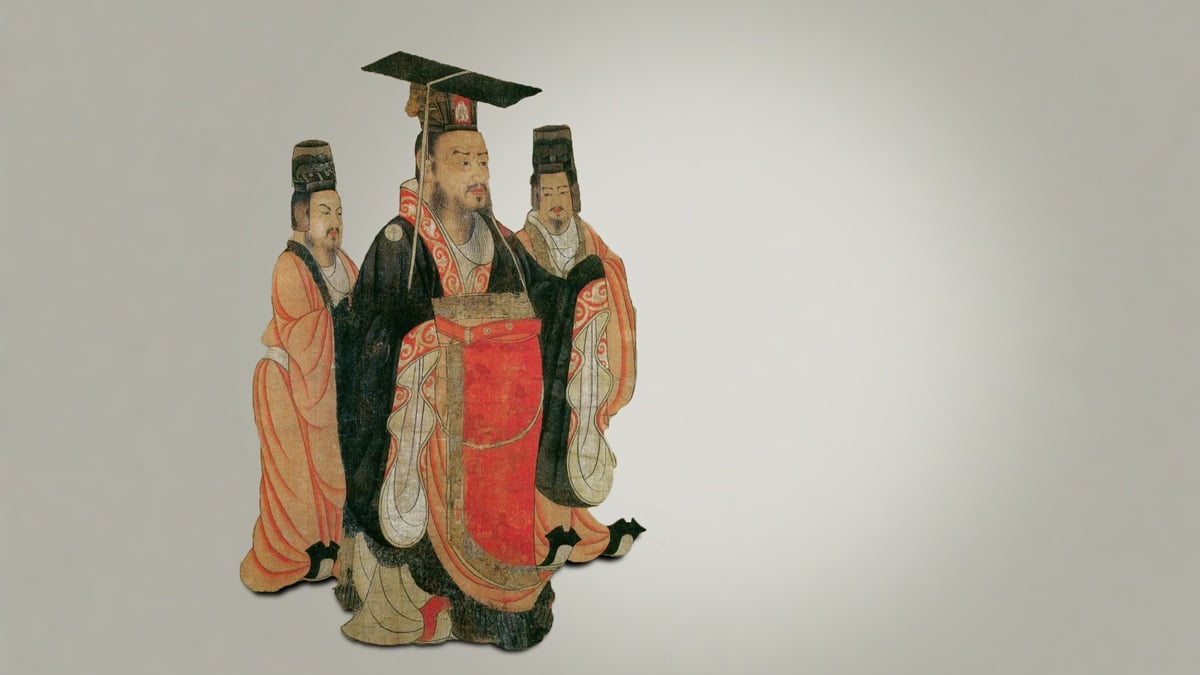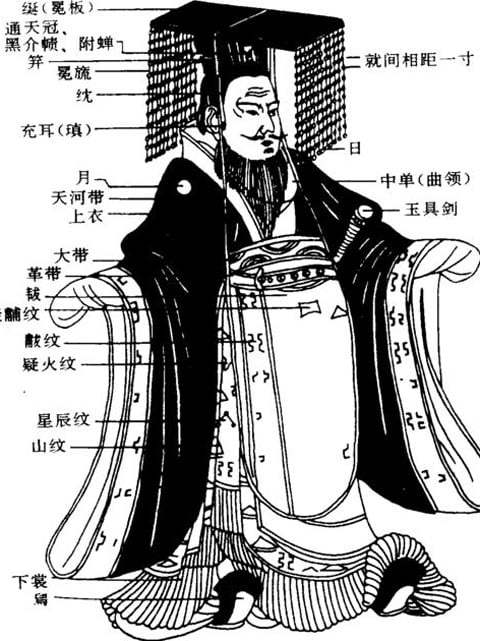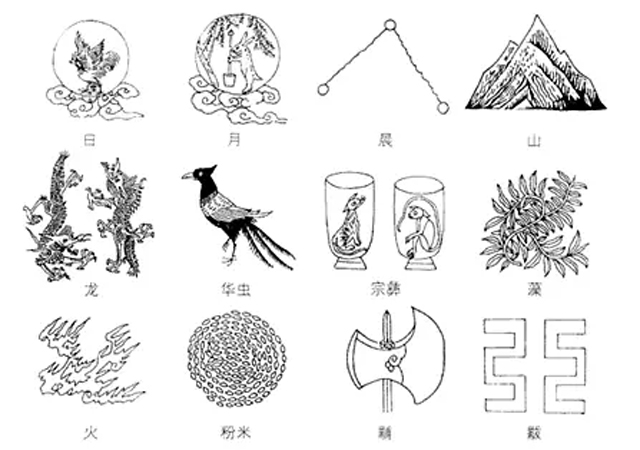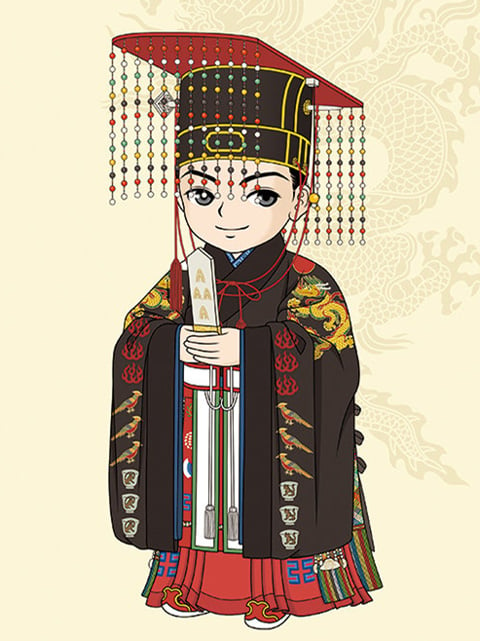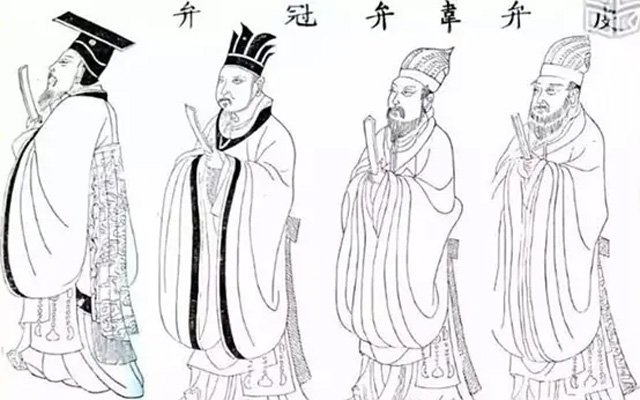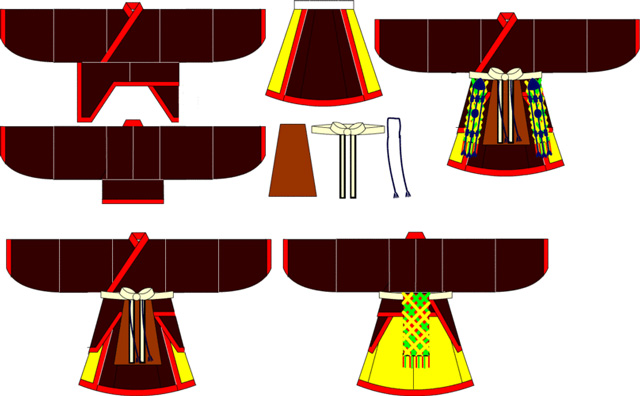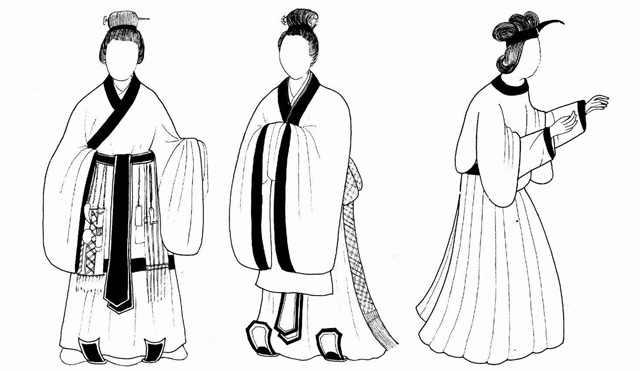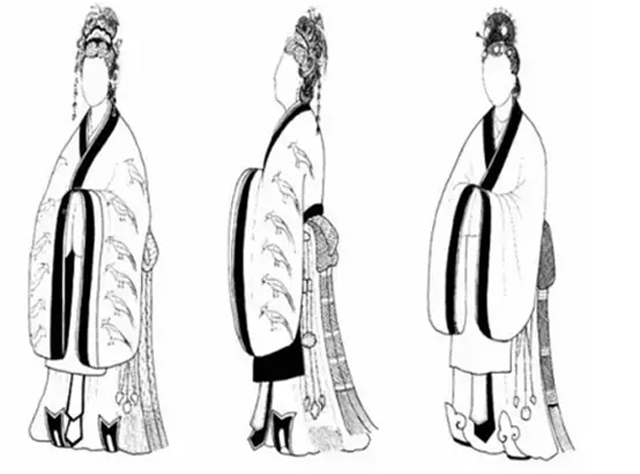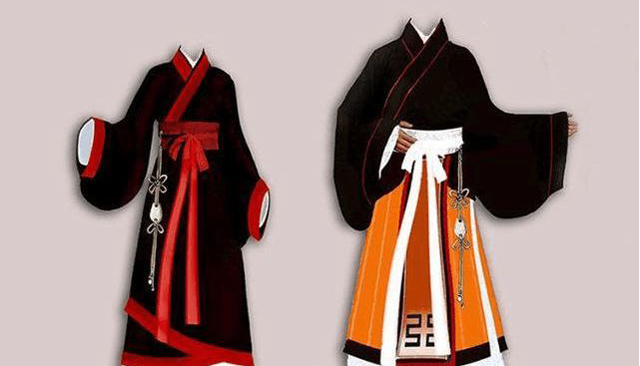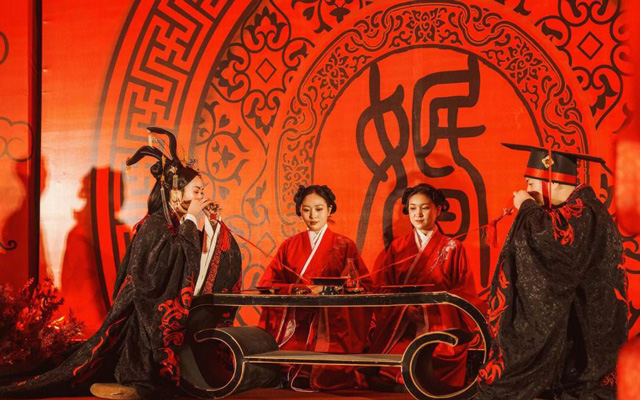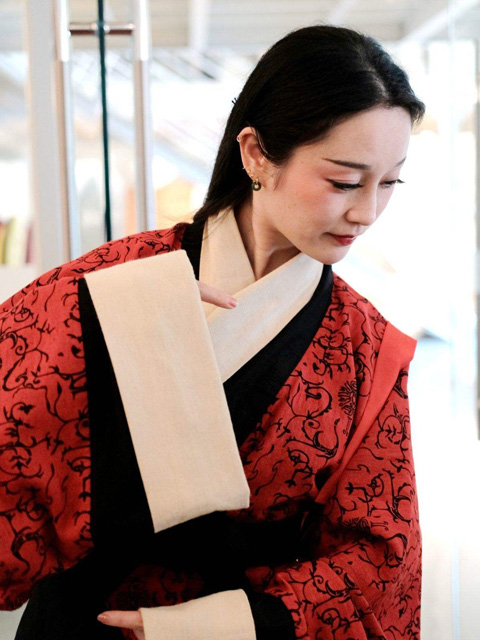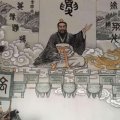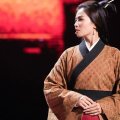The Zhou Dynasty, which lasted from 1046 to 256 BCE, was a period of great cultural and artistic achievements in China. One of the most notable aspects of this era was the fashion and beauty trends that emerged among the ruling class. From elaborate hairstyles to intricate makeup designs, the dress and appearance of the Zhou Dynasty were highly symbolic and reflected the social status and cultural values of the time. In this article, we will explore the fascinating history of dress and makeup during the Zhou Dynasty, revealing the intricate details and rich symbolism behind these ancient fashion trends.
The Clothing of the Zhou Dynasty
During the Zhou Dynasty, which was the third slave society in Chinese history following the Shang Dynasty, there were a total of 32 monarchs and 37 kings who ruled for 790 years. The clothing system in ancient China was already well-established during the Zhou Dynasty. There were even official positions designated to manage the imperial clothing.
The clothing style during the Zhou Dynasty era consisted of top and bottom – the upper part being called “Yi”, which was slightly looser than the clothing during the Shang Dynasty and had two types of sleeves - long and short. The length of the Yi usually reached the knees and had narrow sleeves, a tight collar, and wide edges. It also had two styles of collars - straight and slanted. The lower part of the clothing was called “Shang”, which was worn down to the calves. The length of skirts or pants varied and could be either above or below the knee.
A wide belt was tied around the waist, and a "Fu (韍)" was added in front of the waist to cover the knees. This was why it was also known as "Bi Xi (蔽膝)." The calves would be wrapped with "Xing Xi," and various types of shoes were worn on the feet. At the same time, hats began to take shape during the Zhou Dynasty.
People at that time were skilled at using different materials to make clothes, people were not only able to weave cloth from hemp and silk, but also make clothes from animal hides and fur. However, clothing made from fur was generally only worn by the nobility. At the same time, people at that time had very high standards for clothing color, which also reflected their relatively high level of dyeing technology. The "Classic of Poetry" contains 130 poems about plants, many of which mention plant-based dyes.
During that time, the colors of clothing were limited to the five primary colors - blue, red, yellow, white, and black. The lower garment used intermediate colors, which are mixed colors made by blending the primary colors together. Meanwhile, the Zhou Dynasty revered fire element, and the corresponding vermilion color was considered the noblest and most prestigious among all colors. Therefore, according to the "Rites of Zhou" vermilion was designated as the national color, and only the Zhou emperor could wear clothing in this color to express his unique and distinguished status.
In addition to clothing, decorations and patterns were also essential. During the reign of Emperor Shun, the twelve patterns were already established, which included the sun, moon, stars, mountains, dragons, Hua Chong, Zongyi, algae, fire, rice, Fu, and Fú. According to the "Rites of Zhou", only the sun, moon, and stars patterns were allowed on flags, while clothing could only have nine different patterns. Only the Zhou emperor was permitted to enjoy the full set of patterns, while nobles could only use up to the patterns without the dragon.
During the Zhou dynasty, there was a variety of clothing styles available, complete with different colors and patterns. Furthermore, specific regulations were established to correspond to different occasions.
Official male attire: Mian Fu (冕服), Bian Fu (弁服), Xuan Duan (玄端), Shen Yi (深衣).
Mian Fu
The Zhou dynasty established over ten grades for the official clothing of the emperor and the feudal lords. The differences between each grade were primarily reflected in the complexity of the style, the pattern designs, and the color and fabric choices utilized. The complexity of the style referred to the matching of the collar, cuff, and hem with different fabrics and colors used in clothing. The pattern designs referred to the varying embroidered patterns on the clothing based on one's level of ranking.
The most valuable type of ceremonial dress is the Mian Fu, which consists of Mian Guan (冕冠, crown), Xuan Yi (玄衣, black robe), Xun Chang (纁裳, vermilion skirt), Bai Luo Da Dai (白罗大带, white silk belt), Huang Bi Xi, single-layered Zhong Dan, and Chi Xi (赤舄, vermilion shoes). The coronation robe contains specific patterns and is worn during the most significant ceremonies, such as the nine-patterned coronation robe worn by the emperor.
The Mian Fu contains specific patterns and is worn during the most significant ceremonies. The Bi Xi of the emperor's coronation robe is red, while those of the feudal vassals are yellow-red. The shoes have double soles made from leather and wood, with higher-than-average heels.
Bian Fu
The second is the Bian Fu, which is so-called because of the style of the matching crown. If wears a Mian, it's called a "Mian Fu," and if wears a "Bian," then it's referred to as a "Bian Fu."
Its grandeur is second only to that of the Mian Fu, and similar in form, but with differences in the crown, patterns, and accessories depending on the level of ranking. The Bian Fu can also be used for ceremonies, but the occasions for wearing it differ based on one's level of ranking.
Xuan Duan
The upper garment of Xuan Duan is the cross collar, the lower garment uses seven pieces of cloth: three in the front and four in the back, with the upper part being "Xuan" (dark blue-black) and the lower part being "Xun" (light-vermilion). The color of the lower garment varies depending on the wearer's status and the occasion, yellow or yellow-red colors are mostly used, representing the colors of the earth and fire, appearing warm and mild.
Shen Yi
Shen Yi is made by cutting separately and then sewing together. The Shen Yi is equivalent to the later long robe, but it wasn't commonly worn by the general public until the period of the Warring States. At least during the Western Zhou period, only aristocrats and above wore Shen Yi as casual wear at home. However, children would wear a simple Shen Yi made of coarse cloth.
Noblewomen attire: Ju Yi (鞠衣), Zhan Yi (展衣), Di Yi (翟衣), and Lu Yi (禄衣).
Ju Yi
Jiu Yi refers to the attire worn by the empress when leading women in religious ceremonies for silkworm deities and announcing the start of silk farming. It is also worn by the wives of feudal lords when assisting the king in ancestral temple ceremonies.
Zhan Yi
Zhan Yi is the attire worn by the empress when paying respects to the emperors or hosting grand banquets. It is also worn by the wives of prominent officials when assisting the emperors in ancestral temple ceremonies.
Di Yi
Di Yi is the highest-ranking ceremonial attire worn by the empress and other duchess consorts. They are worn during religious ceremonies with different colors and patterns depending on the occasion and the wearer's status.
Lu Yi
Lu Yi is the attire worn by the empress during casual leisure time, and it is also worn by the wives of lower-ranking officials when assisting their husbands in religious ceremonies.
Marriage system and wedding clothes in the Zhou Dynasty
Weddings during the Zhou dynasty were known as "Hun Li (昏礼)" with "hun" meaning dusk, and the wedding ceremony would be held at dusk. The Zhou dynasty weddings were solemn and dignified, without the festive celebrations seen in later periods with drums and trumpets. Therefore, the wedding attire during the Zhou dynasty adopted the solemn color of black, representing a sense of respect and honor that wasn't to be taken lightly.
According to "Etiquette and Ceremonial," the wedding attire during the Zhou dynasty was primarily dark-blue-black, with vermilion as a secondary color. In the Zhou dynasty, people revered black as the color of the sky and vermilion as the color of the earth. This reflected the people's awe towards the heavens and the earth, which was mirrored in their choice of wedding attire colors.
The Makeup of the Zhou Dynasty
During the Zhou dynasty, a new era of Chinese makeup history was ushered in. The makeup style during this time was relatively simple and elegant, with an emphasis on natural beauty. The main colors used were white, black, and light red, with little use of bright red makeup. Therefore, this era is also known as the "simple makeup era." Finer details such as eyebrow makeup, lip makeup, and face makeup were also popular.
The makeup products used during the Zhou dynasty included face powder and lip balm made from animal oils or plant seeds. These products were colorless and mainly used for moisturizing and protecting the skin.
During the Zhou dynasty, rice was ground into powder and mixed with lead powder to make the skin appear whiter and the makeup last longer. However, lead powder is also poisonous.
The materials used for eyebrow makeup during this time were mainly derived from natural plants and animals. For example, charcoal obtained from burnt branches could be mixed with oil to create the earliest eyebrow dye. The desired eyebrow color during this time was a dark blue-black.
Nail polish was already in use during the Zhou dynasty, made from materials such as beeswax, protein, and gelatin, as well as various colors. However, it was only used by the noble class and was a symbol of their status. To protect their long nails, nail guards made of precious metals were also worn, which served as a further symbol of their wealth and position.
